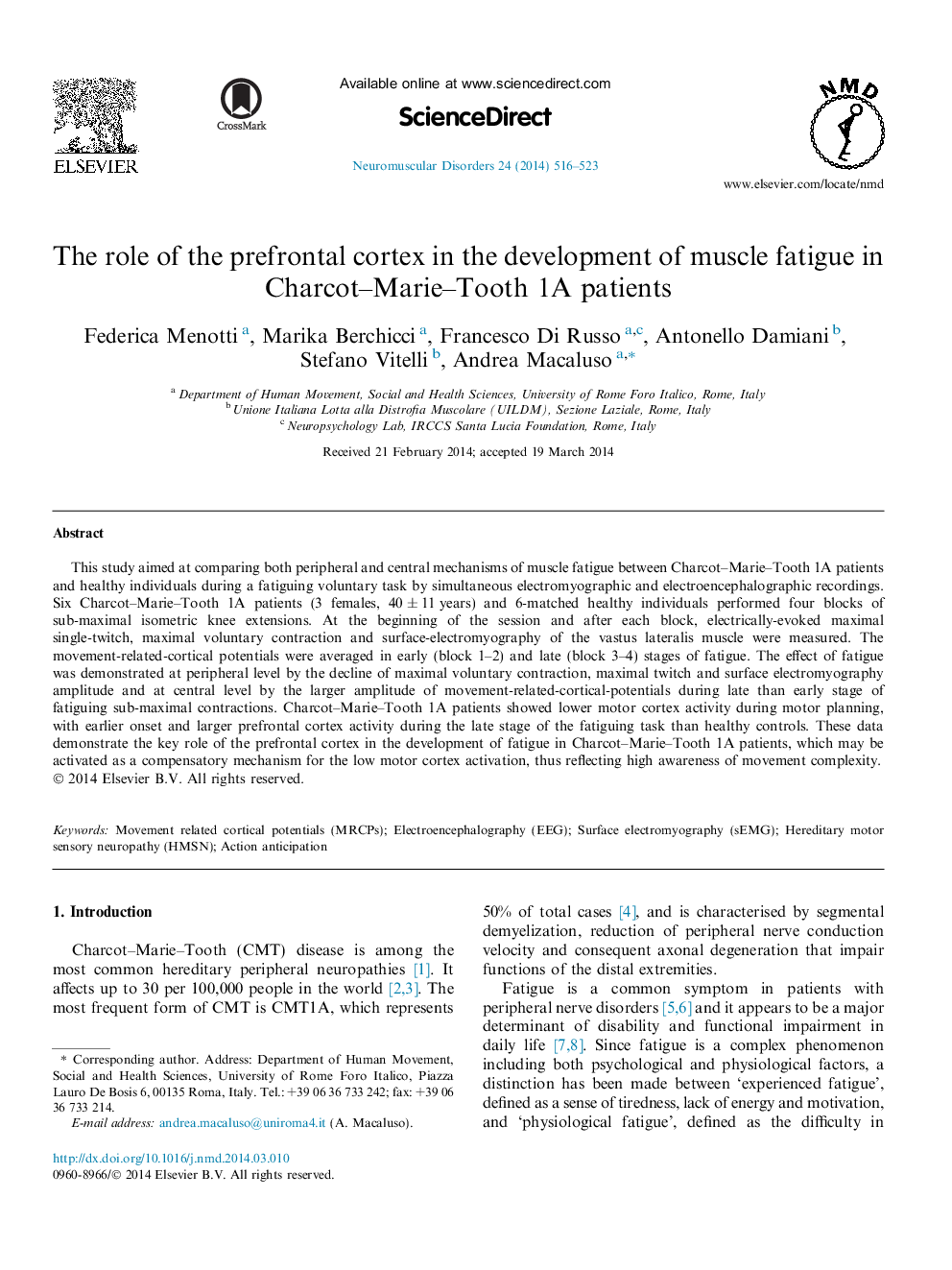| Article ID | Journal | Published Year | Pages | File Type |
|---|---|---|---|---|
| 6041573 | Neuromuscular Disorders | 2014 | 8 Pages |
This study aimed at comparing both peripheral and central mechanisms of muscle fatigue between Charcot-Marie-Tooth 1A patients and healthy individuals during a fatiguing voluntary task by simultaneous electromyographic and electroencephalographic recordings. Six Charcot-Marie-Tooth 1A patients (3 females, 40 ± 11 years) and 6-matched healthy individuals performed four blocks of sub-maximal isometric knee extensions. At the beginning of the session and after each block, electrically-evoked maximal single-twitch, maximal voluntary contraction and surface-electromyography of the vastus lateralis muscle were measured. The movement-related-cortical potentials were averaged in early (block 1-2) and late (block 3-4) stages of fatigue. The effect of fatigue was demonstrated at peripheral level by the decline of maximal voluntary contraction, maximal twitch and surface electromyography amplitude and at central level by the larger amplitude of movement-related-cortical-potentials during late than early stage of fatiguing sub-maximal contractions. Charcot-Marie-Tooth 1A patients showed lower motor cortex activity during motor planning, with earlier onset and larger prefrontal cortex activity during the late stage of the fatiguing task than healthy controls. These data demonstrate the key role of the prefrontal cortex in the development of fatigue in Charcot-Marie-Tooth 1A patients, which may be activated as a compensatory mechanism for the low motor cortex activation, thus reflecting high awareness of movement complexity.
